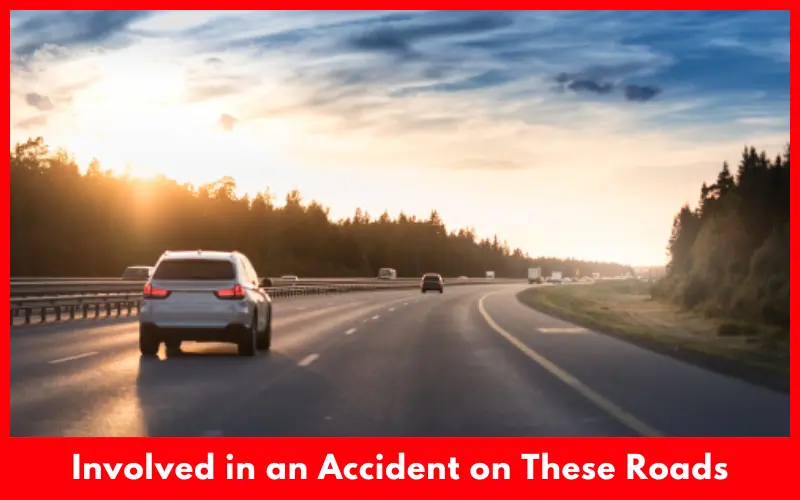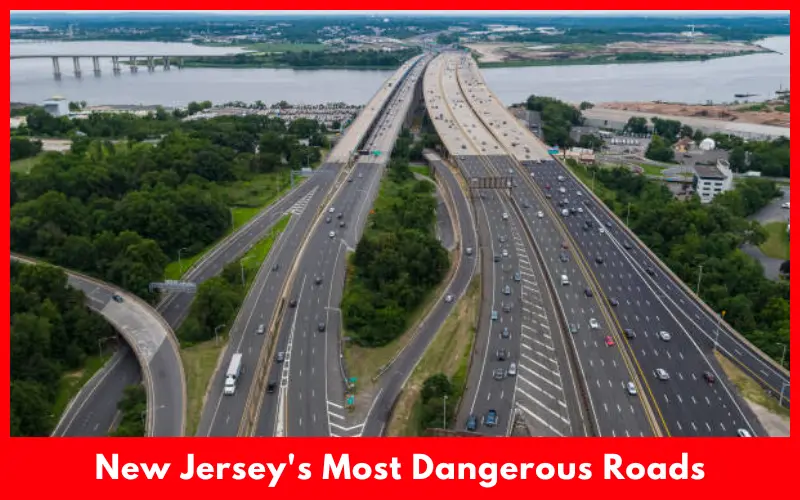New Jersey is one of the most densely populated states in the United States, and boasts some of the busiest roads in the US. Unfortunately, the hustle and bustle in the Garden State means that many busy roads can also be pretty dangerous for drivers, cyclists and pedestrians.
To stay safe it is important to know which roads in New Jersey are the most dangerous. Here’s an overview of the most dangerous roads in New Jersey, why they’re so dangerous, and tips for staying safe.
Article Summary
Overview of Traffic Safety in New Jersey
The issue of traffic safety in New Jersey is a matter of complacency, which causes thousands of car accidents annually. Traffic crashes occur regularly in New Jersey, enough to make headline news.
According to New Jersey Department of Transportation, the number of traffic crashes increased to more than 270,000 in 2023 across the publicly owned system as compared to about 236,000 in 2020.
Injuries sustained in traffic crashes in NJ skyrocketed from nearly 124,000 in 2020 to over 138,000 in 2023, while fatalities rose from 632 to almost 680 due to the increased traffic of both private and public motor vehicles and poor habits of drivers like speeding and distracted driving, and the old, deteriorating conditions of the infrastructure, which can cause failures and malfunctions.
Since New Jersey’s population has grown, more private vehicles move along streets. As the streets and their attendant infrastructure age, the risk spreading to the roadways surged, so it is High time to raise awareness and prevent car accidents to save people’s lives.
Criteria for Identifying Dangerous Roads
To identify New Jersey’s deadliest highways, you would look at accident rates and severity, as well as traffic volume and road geometry.
The New Jersey Department of Transportation (NJDOT) and the National Highway Traffic Safety Administration (NHTSA), among other government agencies, conduct studies tracing accidents and identifying dangerous areas.
They often focus on specific lengths of road where accidents seem to happen frequently, and explore what could be done to address the risk.
List of New Jersey’s Most Dangerous Roads
Route 1
Route 1 highway which links New York to Philadelphia and in New Jersey passes over and under major roads in Belmar.
Belmar is a town with a great traffic on route 1. Particulary near universities, for example Rutgers Unviersity in New Brunswick near New York, is one of the most trefurious highways in New Jersey.
The road has high-speed collision areas between local roads when joining Route 1 which is called the local roads.
Because local roads frequently intersect Route 1, Many worse collision always happen. People have to change lanes continuously in heavy traffic, so it has a high frequency accident rate.
Therefore, route 1 which is long over 600 miles in Belmar New Jersey, is one of the most trefurious highways not only in Belmar but also in New Jersey.
Garden State Parkway
The north-south Garden State Parkway is known as one of the most dangerous roads in New Jersey, with an exceptionally high rate of accidents in peak travel times, like summer months and school breaks.
The parkway spans more than 170 miles of highway that become stop-and-go with multiple-lane congestion in almost all areas, and particularly bad at exits near tourist hotspots, such as the Jersey Shore.
Speed and pipeline congestion cause the most accidents. Multi-car pileup accidents are also especially common on this road, often involving severe injuries and fatalities at highway speeds.
Route 130
Route 130 is one of the deadliest roads in New Jersey for pedestrians. The road, which parallels the New Jersey Turnpike, is designated NJ 130 and has multiple crossings with other roadways, where drivers often fail to stop for people crossing at bicycle and pedestrian signals.
Further, speed limits are high, and no pedestrian-safety or cyclist-safety infrastructure exists alongside the roadway. Cyclists likewise are significantly over-represented with regard to injuries on this highway due to its narrow shoulders and lack of bicycle infrastructure lanes.
Interstate 78 (I-78)
One of the interstate highways in New Jersey, I-78, straddles the northern half of the state, offering the main interstate route for truck traffic, and is ranked one of the most dangerous roads in New Jersey, based on an analysis of recent New Jersey semi-truck accident study, in terms of number of truck accidents per mile throughout the state.
Particularly, there are several stretches where a high volume of truck traffic, intermittent inclement weather, high speeds, and steep grades and sharp curves, are among factors that multiply the number of serious vehicle accidents to an alarming level.
Route 22
I believe the hazard takes place on Route 22 since it is a very often used east-west highway system, where the highest rate of crashes occur at the intersections and access points when vehicles enter or leave the highway.
Route 22 itself is a highway system that was designed, mainly, on a terrain and mountains region. Night-time visibility is a huge problem there! In certain areas the lanes are very narrow, as you might imagine down one stop path. Traffic is nearly always very congested because there is daily commercial traffic on all lanes.
It is most likely that a stressed driver becomes overwhelmed when trying to maneuver their vehicle off an exit too quickly.
Contributing Factors to Road Danger
Road Design Flaws
Poor road design is a big reason for many accidents. For instance sharp curves, improperly designed intersections and inadequate merging lanes present dangerous conditions to drivers.
The merging lanes on Route 22 are especially short, and drivers usually cannot match the traffic speed in such a short lane, which will usually lead to rear end accidents.
Driver Behavior
Another reason that roads in New Jersey are dangerous is human behaviour. Speeding, texting while driving and driving under the influence (DUI) are among the most common causes of accidents on New Jersey’s Dangerous Roads.
On highways such as the Garden State Parkway speeding is a problem on a daily basis, which leads to serious accidents, especially when traffic slows or stops abruptly.
Environmental and External Factors
Other factors, such as weather conditions, also affect the road safety. For instance, when the weather is cold, the roads become icy. Icy roads contribute to the accidents on highways and create some troubles.
Likewise, heavy rain and fog may make roads slippery and give rise to less visibility to drivers. Road structure problems, such as potholes, poor road signs, or the absence of street lighting also trigger unexpected events. Animals crossing the roads on more rual areas may cause sudden situations and danger.
What to Do If You’re Involved in an Accident on These Roads
Immediate Steps
If you need to file an accident report after crashing in New Jersey, make sure everyone is safe first by checking on the condition of all involved parties and calling 911, if necessary.

If possible, move your vehicle off the road to ensure no one else gets hurt and to prevent further collisions. Snap photos of the scene: the vehicles involved, the road, any visible injuries.
Legal Considerations
It is important to know your rights and responsibilities after an injury. For example, if you have been hurt in New Jersey, Exchange necessary information with the driver(s) at the time it occurs.
This includes insurance information. This might be important in court down the road. Immediate debriefing with an attorney who handles dangerous road cases is essential.
Seeking Compensation
If you suffer injuries in an incident on one of these dangerous roadways, you could be entitled to compensatory damages for your medical expenses, rehabilitation expenses, lost wages, and ongoing pain and suffering.
It is important to notify your insurance company that you have been involved in the accident and to provide them with all relevant information. If the accident was caused by the negligent conduct of another party, you might want to pursue a personal injury claim to get full compensation.
End Note
This is useful information for people on the road – both to help drivers understand which road have a higher rate of accidents and also for cyclists and pedestrians who should take extra precautions to be as safe as possible.
Even though the State can improve road safety measures, everyone should also take precautions when they are driving on roads, follow the traffic rules, and drive safe. We all have a role to play in keeping New Jersey’s roads safer for as many people as possible.

